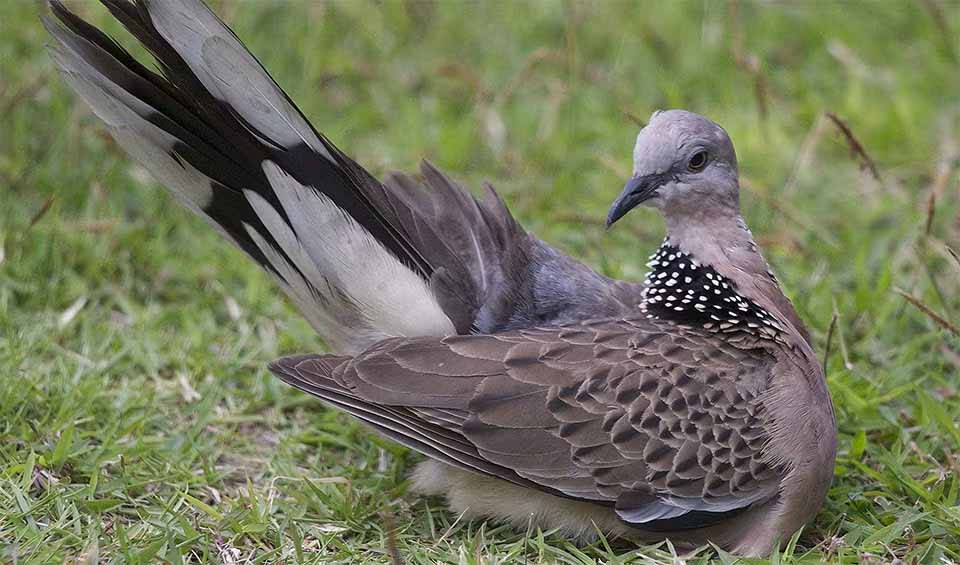A gentle and beautiful bird that is commonly found in Asia, particularly in India, Southeast Asia, and China, though it has also spread to other parts of the world, including Australia and the Pacific Islands. This dove is easy to recognize by its soft, cooing call and its distinctive appearance. It has a slender body, a long tail, and soft, pale brown feathers that are slightly pinkish on the chest. The bird gets its name from the distinctive black and white spots on the back of its neck, which form a sort of collar. These spots give the spotted dove a unique and elegant look.
One of the most charming features of the spotted dove is its gentle and peaceful demeanor. These birds are often seen alone or in pairs, calmly walking on the ground or perched in trees. They feed mainly on seeds, which they pick up from the ground, but they will also eat small fruits and insects if they find them. Their diet makes them common visitors to gardens and parks, where they can often be seen pecking around for food. Because they are not aggressive and tend to move slowly and quietly, they are easy to approach, making them a favorite among birdwatchers.
Spotted doves are also known for their sweet, melodious cooing, which is a familiar sound in many parts of the world. The cooing is usually a sign of contentment or a way to communicate with other doves. During the breeding season, males will coo more frequently as they try to attract a mate. The courtship display of the Spotted Dove is simple but endearing. The male will puff up his chest, fan out his tail, and bow to the female while cooing softly. If the female is interested, she will respond by allowing the male to preen her feathers.
Distribution
 Australia
Australia Bangladesh
Bangladesh Brunei
Brunei Cambodia
Cambodia China
China Official estimate
Official estimate
 East Timor
East Timor Fiji
Fiji India
India Indonesia
Indonesia Laos
Laos Malaysia
Malaysia Maldives
Maldives Mauritius
Mauritius Mexico
Mexico Myanmar
Myanmar New Caledonia
New Caledonia New Zealand
New Zealand Papua New Guinea
Papua New Guinea Philippines
Philippines Singapore
Singapore Taiwan
Taiwan Official estimate
Official estimate
 Thailand
Thailand US Virgin Islands
US Virgin Islands United States
United States Vietnam
VietnamAnything we've missed?
Help us improve this page by suggesting edits. Glory never dies!
Suggest an editGet to know me
Terrestrial / Aquatic
Altricial / Precocial
Polygamous / Monogamous
Dimorphic (size) / Monomorphic
Active: Diurnal / Nocturnal
Social behavior: Solitary / Pack / Flock
Diet: Carnivore / Frugivore / Omnivore / Piscivorous / Insectivore
Migratory: Yes / No
Domesticated: Yes / No
Dangerous: Yes / No




